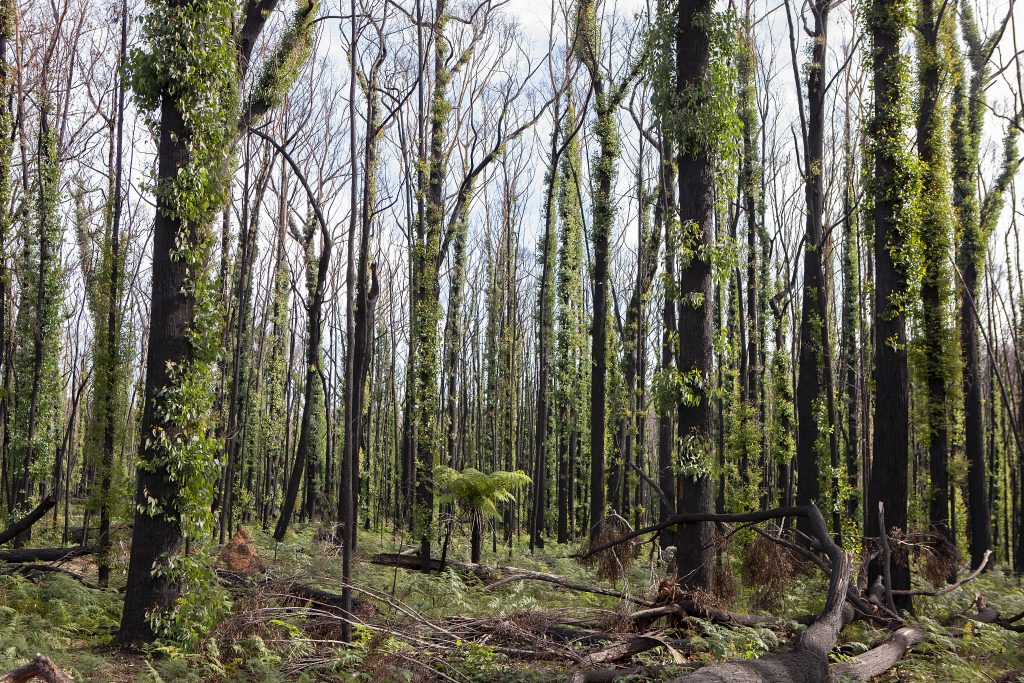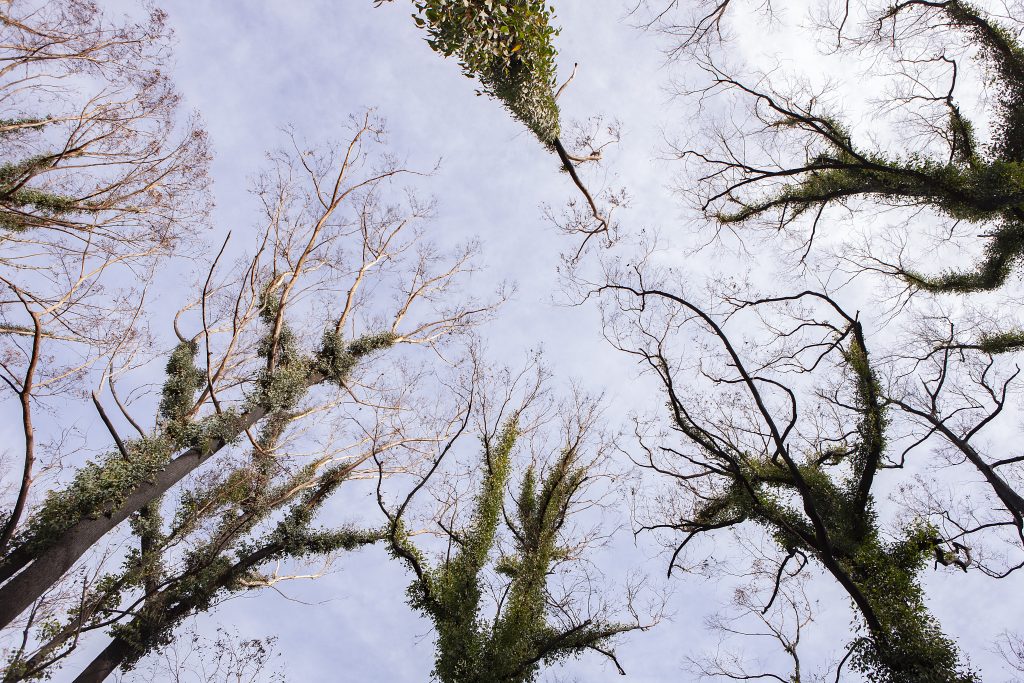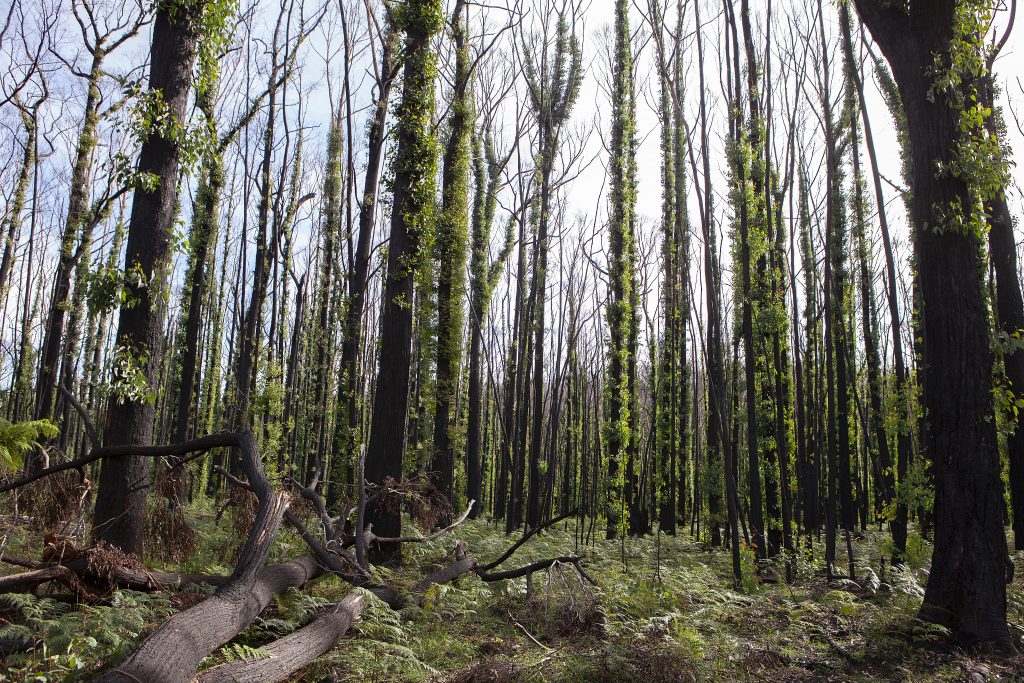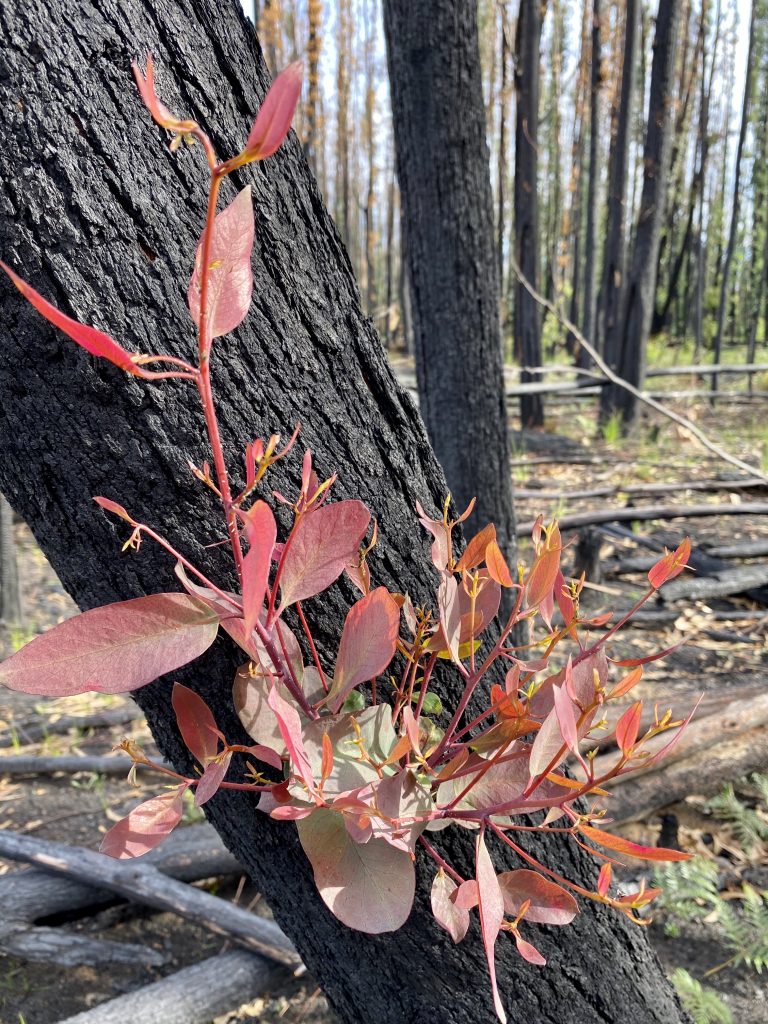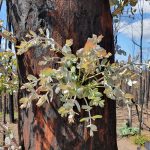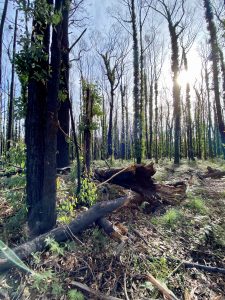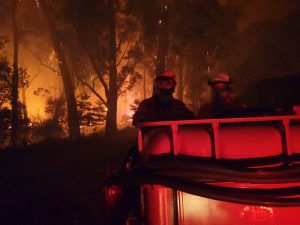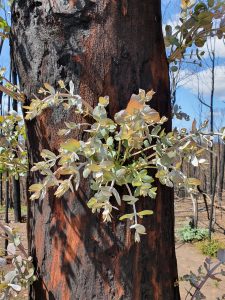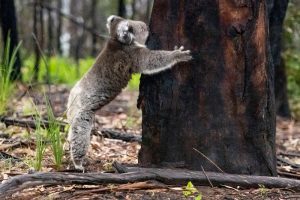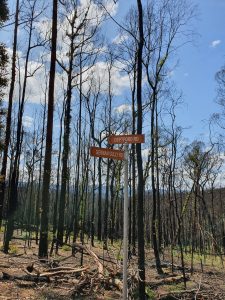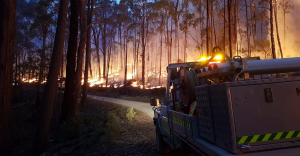Effects of fire on plants
Individual plants
Fire-adapted plants care often known as ‘seeders’ or ‘sprouters’. These terms refer to the response of individual plants after fire.
Seeders
Some fire-tolerant species produce large quantities of seed that accumulate in the soil or in woody fruit and germinate after fire. In these species, the entire population of growing plants may be killed by the fire and survival is solely from seeds. The mountain ash (Eucalyptus regnans) is an example of such a species. Similarly, adult Banksia ericifolia plants are killed by fire, but release large quantities of seed. A considerable advantage for seedling growth is obtained because the fire releases many nutrients from the soil and from the pre-existing vegetation. Species that use this strategy, however, are unable to regenerate if the time between successive fires is shorter than the time required to reach maturity and produce seed.
Sprouters
Other fire-tolerant species have remarkable powers of survival and regeneration. Adult plants are not killed by the fire. Thick insulating bark, numerous buds to allow resprouting, and underground buds, including lignotubers (large woody rootstocks) are all adaptations to dry conditions which assist in fire survival. The largely intact root systems and/or trunks of fire-resistant plants allow quick recovery from fire. Species such as Grey Ironbark, Eucalyptus paniculata and Banksia aemula (= serratifolia) have thick bark which enables the trunk and main branches to survive fire and put out new shoots from dormant buds.
Some groups, notably Eucalyptus and Banksia, include species that employ both strategies. Most eucalypts possess lignotubers, but these tend to be more highly developed in those species occurring where fire is naturally frequent. Those species growing where fire is naturally infrequent tend to have less well developed lignotubers, thinner bark, and often regenerate primarily from seed.
Plant communities – seral responses
Changes in vegetation communities following fire are often discussed in terms of successional or seral stages. These are thought of as a predictable sequence of species replacements that occur following a fire. Over time, one community replaces another in an orderly, predictable process. This process is often attributed to competition: one group of plants outcompetes others at particular time points following the fire. If no further disturbance occurs, this process may result in a climax plant community.
Time since fire and fire frequency are important influences on a floral community.
Back to the ecology theme overview
